Forex markets took a walk on the wild side on August 4, 2021 as data clashed with the FOMC to produce big two-way moves. DXY was whacked on ADP then soared on a hawking-up Fed which took EUR to the woodshed:
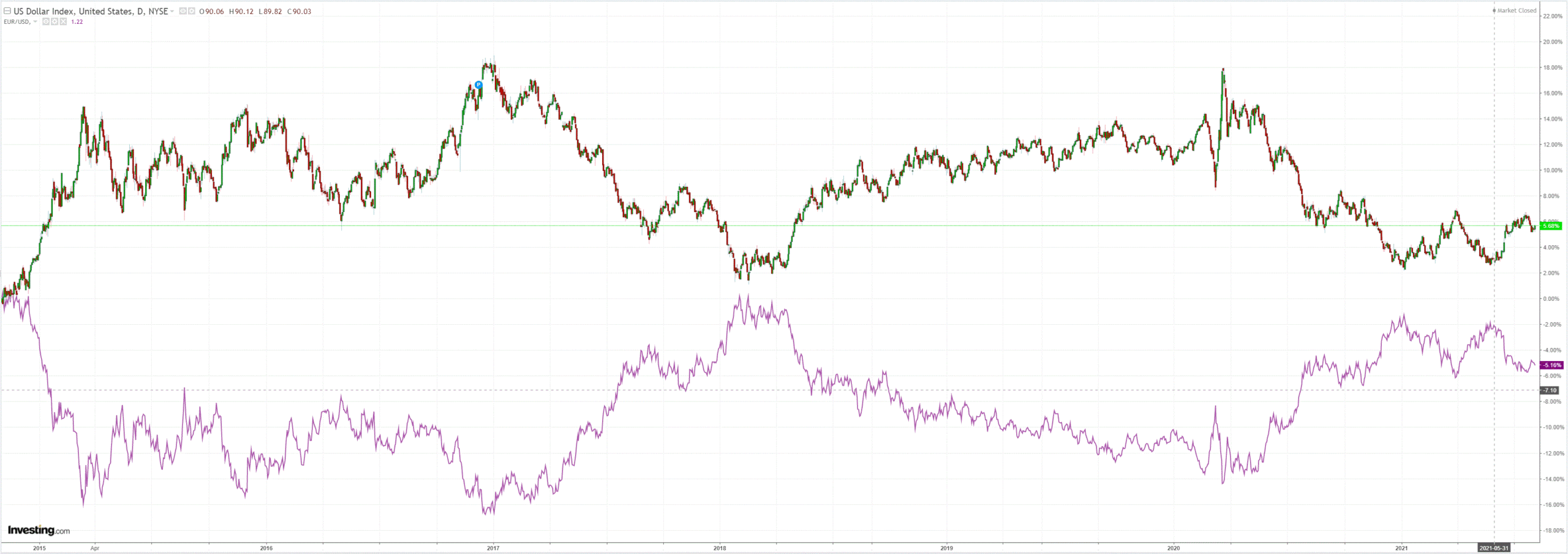
Thr Australian dollar pumped and dumped:
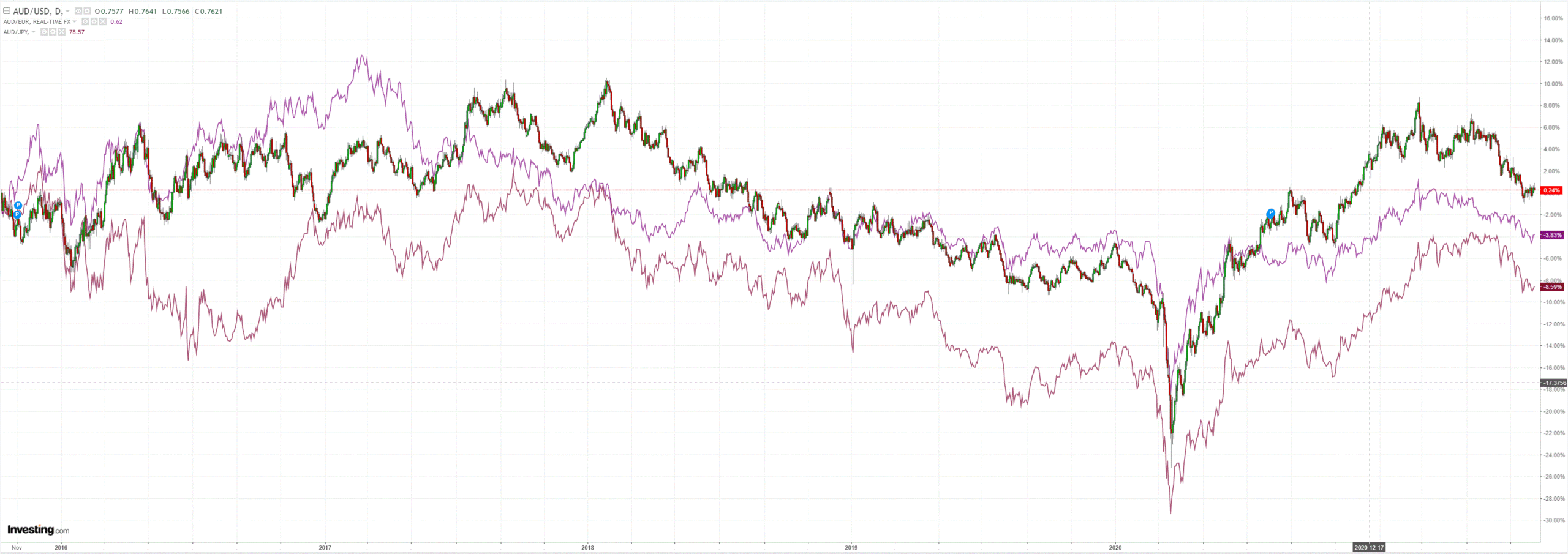
Gold held but oil gave way. This rally is cooked and maybe on the verge of pricing some Delta damage:
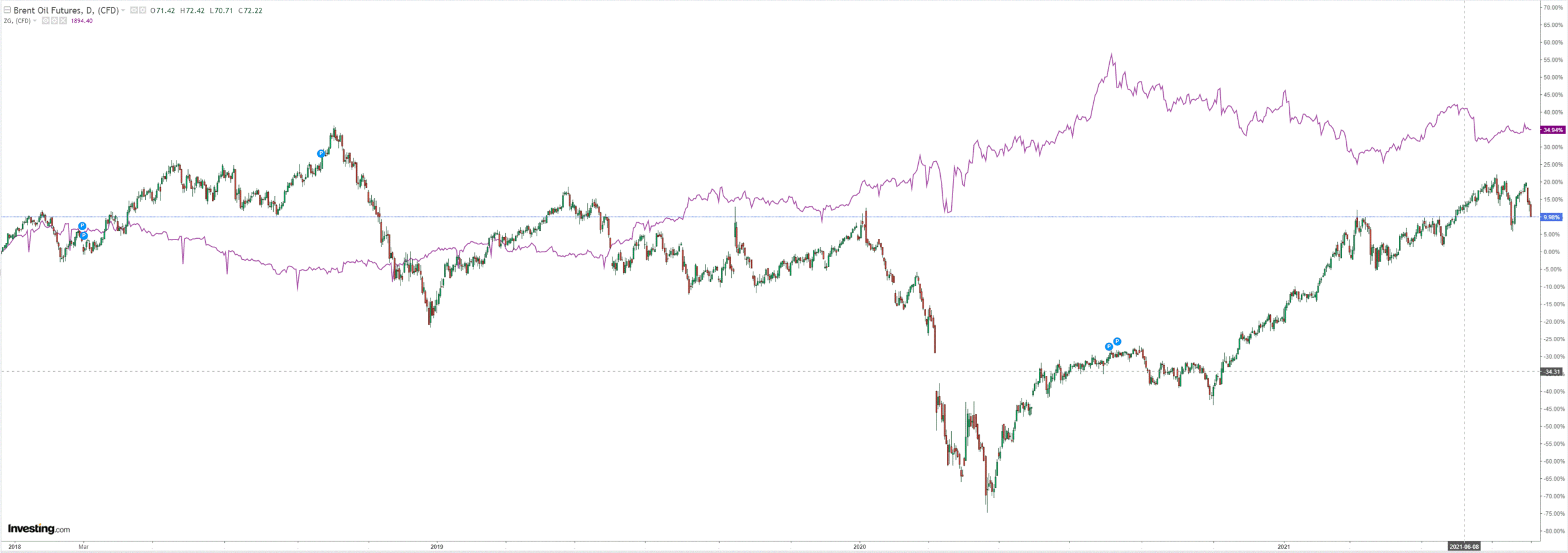
Base metals tanked:
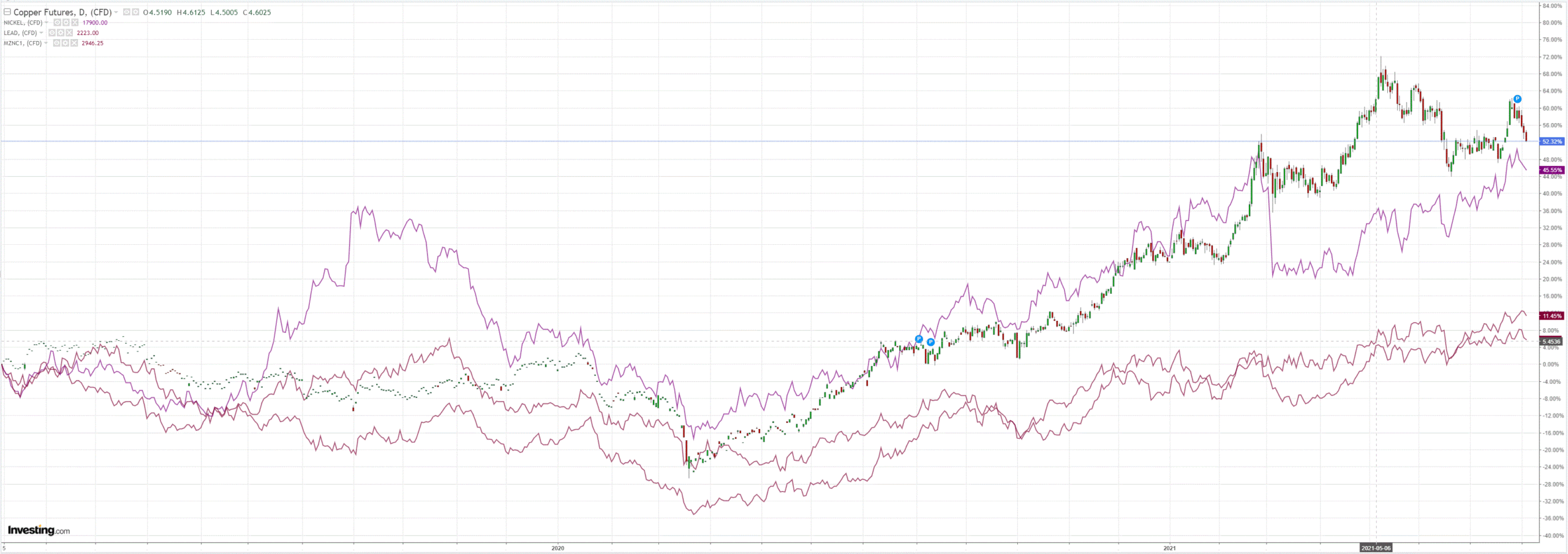
Big miners shivered:
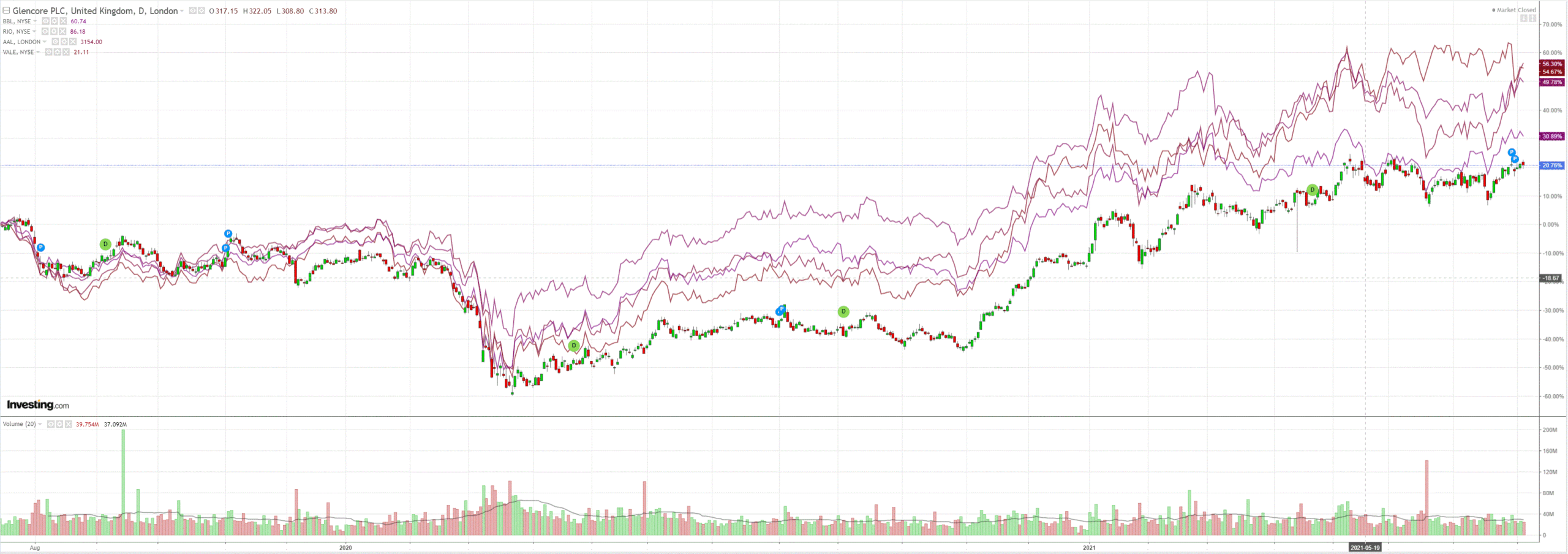
EM stocks hung on but that chart is really ugly:
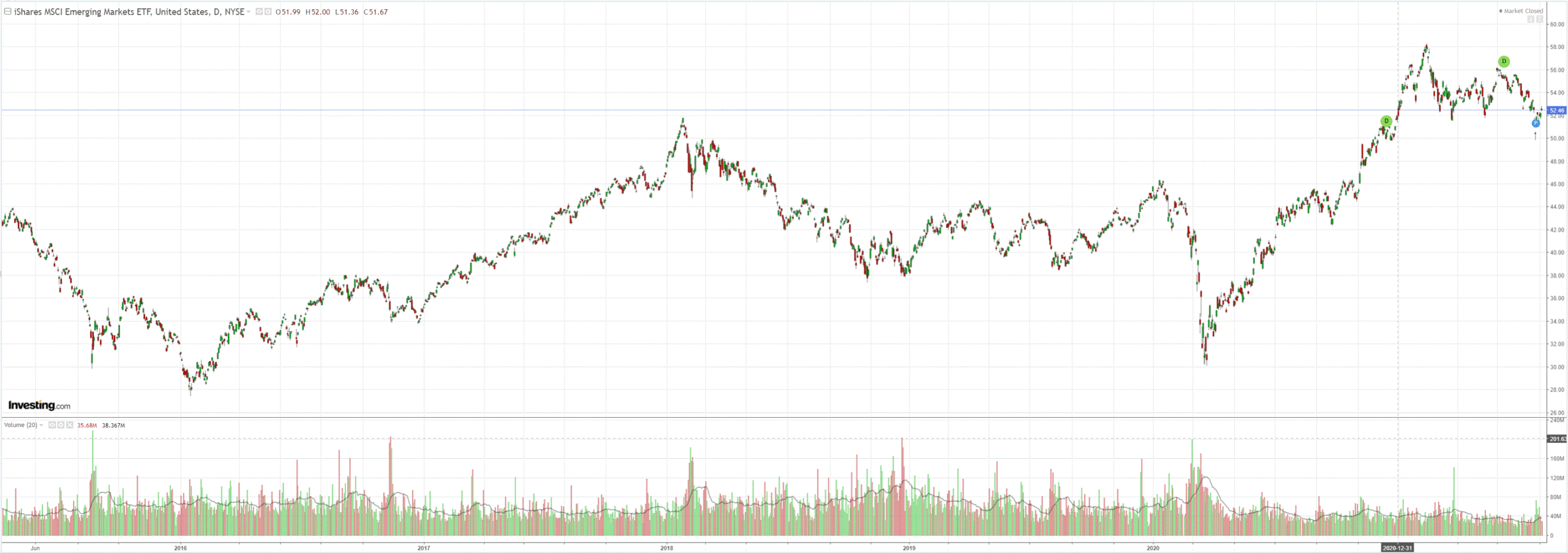
Junk firmed a bit more:
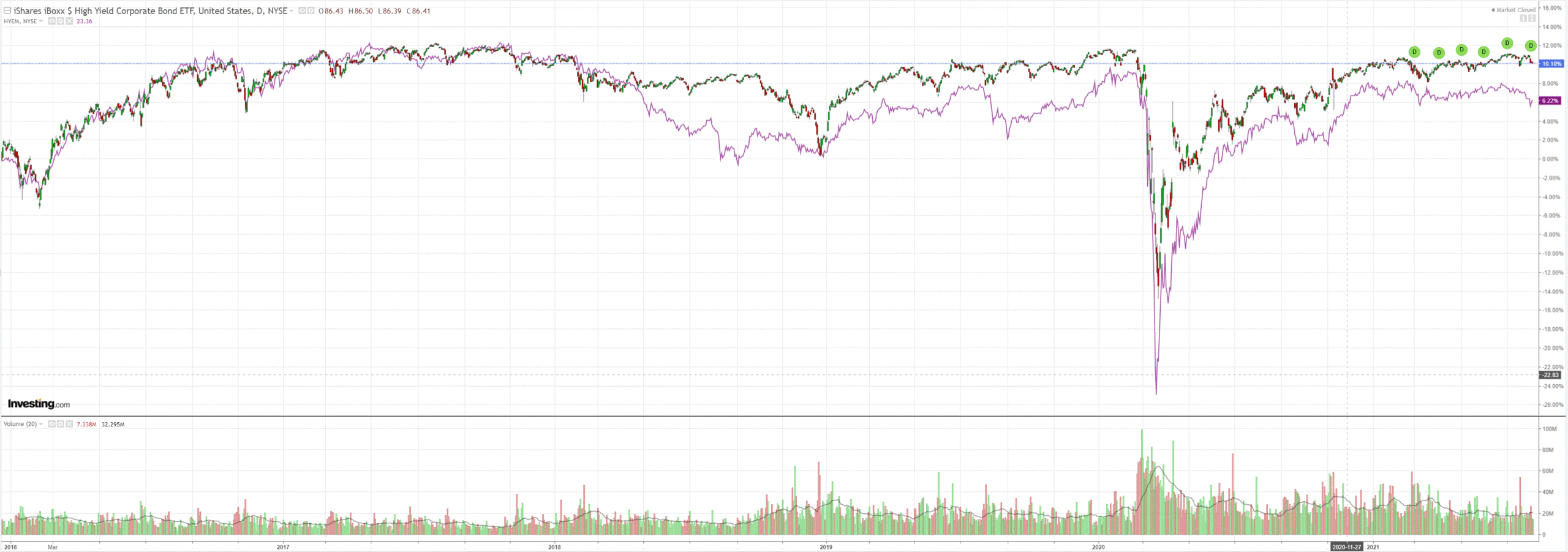
The US curve was squashed again, this time by a bear flattener as the Fed charges towards policy error:
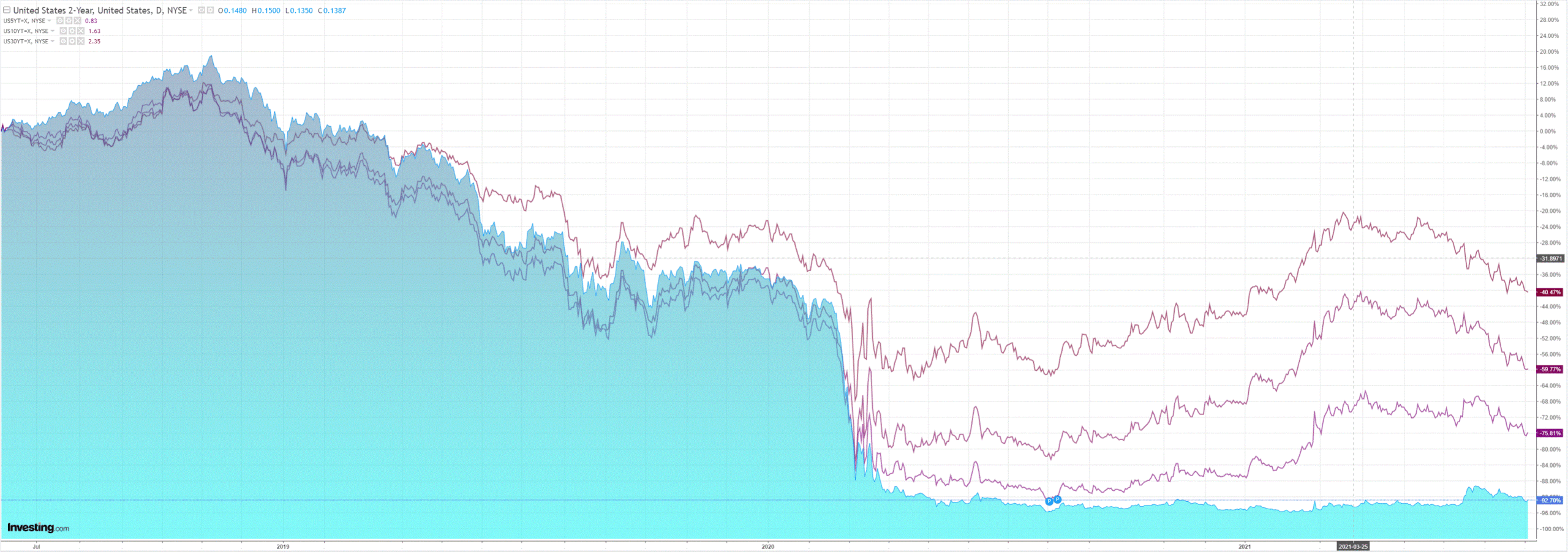
Stocks did not like it though growth held on:
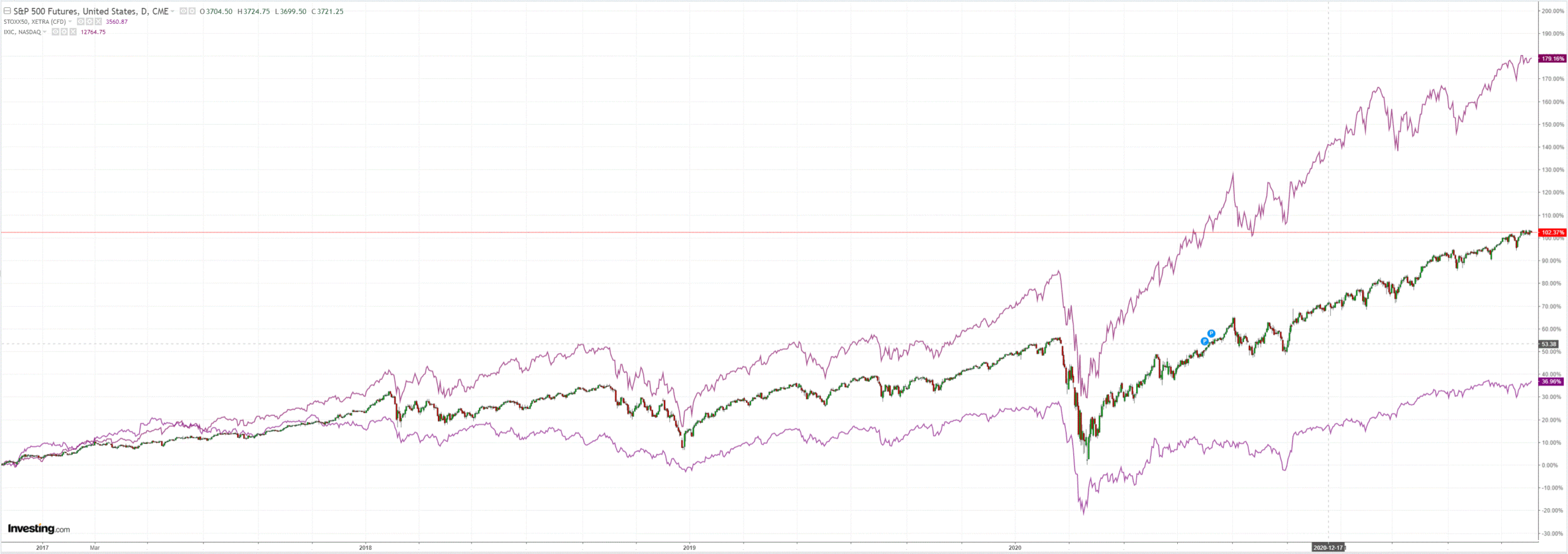
Westpac has the data:
Event Wrap
US private sector payrolls (ADP) in July disappointed with a rise of 330k (vs 690k expected, 692k prior). The report reflects hiring headwinds.
ISM services activity survey beat expectations, rising from 60.1 to 64.1 (vs 60.5 expected) – a record high. Gains were broad-based, with exports and prices paid near record highs.
Fed Vice-chair Clarida said policy normalisation in 2023 would be “entirely consistent” with the new policy framework, and that conditions for raising rates could be met by the end of 2022, with a tapering announcement possible later this year. His baseline view is for healthy job gains in Q3. On inflation, risks are seen to the upside, although he supports the official view that the current overshoot is transitory. He was surprised by the fall in treasury yields, wondering if it reflects virus risks.
Event Outlook
Australia: Australia’s trade account has been in surplus for 41 consecutive months, from the start of 2018. For June, the surplus climbs to a forecast record high of $10.8bn, up $1.1bn on May, led by export strength. Export earnings increased by a forecast 5.5% in the month, +$2.3bn. Customs data reports strength in iron ore, coal, gas and gold. Imports resumed their upward trend, increasing by a forecast 3.6%, +$1.2bn, to meet rising domestic demand. The ABS will publish Weekly Payroll Jobs for the fortnight ending July 17, which will overlap the reference period of the upcoming July labour force survey.
UK: The BoE will deliver its August monetary policy decision. We will be looking for commentary around the risks to the outlook, and any possible guidance on asset purchases, balance sheet normalisation, or the policy rate. Although activity is rebounding briskly, the Delta variant poses new uncertainties for the Bank.
US: Robust domestic demand is expected to keep the June trade balance deficit wide, at a forecast $74.1bn. The downtrend seen in initial jobless claims should accelerate as unemployment benefits roll off (market f/c: 383k). The FOMC’s Waller will discuss central bank digital currency.
As Nomura put it so well yesterday:
Fed Chair Jerome Powell seems to have determined that it would be difficult to slow the move toward monetary normalization in the Fed overall and decided to take control of the QE tapering process rather than isolating himself as a dovish stalwart. Corroborating this view, on 2 August, Federal Reserve Governor Christopher Waller, who has taken a dovish stance similar to Powell up until now, signaled a hawkish shift with his assertions that if job reports for the next two months show improvements, the Fed could announce a reduction in QE in September and finish those reductions about five to six months after beginning. We think this is because the risk of stubbornly high risk cannot be ignored. If Fed Vice Chair Richard Clarida expresses similar views in his 4 August speech, it could be read as the Fed reserve board members’ current stance. This would raise the likelihood that Powell would mention intentions to begin reducing QE and preparations to tackle high inflation (bringing rate hikes forward) at the Jackson Hole summit in late August.
We now have the Clarida confirmation. The Fed is moving forward with taper.
At the worst possible moment for risk assets. As noted many times, China has already killed the global reflation with credit clamps and is slowing fast. If the Fed tapers into that then risk markets will confront precisely the same circumstances that they did in 2015. Again Nomura:
Then-Fed Chair Janet Yellen already seems to have thought of rate hikes as a natural extension of QE tapering, as evidenced by her “gaffe” in mentioning that rate hikes could begin “around six months” after QE tapering had finished. After QE3 tapering finished in October 2014, in March 2015 the Fed made it clear that it intended to raise rates within the year, apparently more concerned about an asset bubble than inflation concerns. Nevertheless, a rate hike decision was postponed until December because China devalued RMB in summer 2015, throwing financial markets into turmoil. The Fed has never been particularly skilled in reflecting foreign trades and market trades in its policy conduct. However, the Fed came under criticism when risk-off flows worsened after the rate hike and US inflation expectations began to undercut 2.0% (Figure 3). At her Congressional testimony in February 2016, Yellen stated that the Fed would put off additional rate hikes due to significant tightening in the financial environment (Figure 4). In addition to these hints about delays to Fed rate hikes, globally share prices rebounded and US inflation expectations bottomed out, but US rates continued to lower the rate hike expectations priced in until July 2016.
The double-tightening of regulatory clamps in China and a falling CNY plus a tightening Fed and rising DXY is toxic for commodities and all EM assets.
On the one hand, a falling CNY sucks away EM competitiveness. On the other hand, a rising DXY sucks away capital and interest rates start to rise.
This combination hammers commodity prices and a doom loop forms around EM external accounts.
This is about as bad as any macro circumstance can get for the Australian dollar and risk assets in general (outside of some kind of global shock event).
If we get a strong US jobs report on Friday then expect the bottom to fall out of the AUD.

